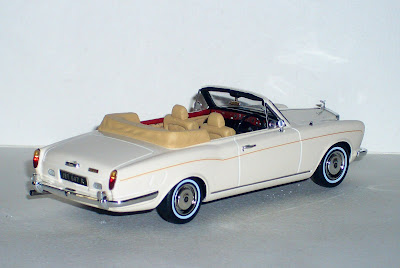



 Louis Delage cars represent perfectly the philosophy of so-called golden years of racing, the decade of 30, an age where the design of the body and building huge, sophisticated engines reached a zenith that he has not unprecedented.
Louis Delage cars represent perfectly the philosophy of so-called golden years of racing, the decade of 30, an age where the design of the body and building huge, sophisticated engines reached a zenith that he has not unprecedented. Halfway through the 30's, Delage entered bankruptcy and was rescued by one of its major competitors, Delahaye. Despite moving in the same market segment, Delage cars were always in all aspects over the Delahaye, so many of their customers Delahaye usual feared was going to benefit by putting in their cars Delage logo, but it was not because Louis Delage continued to monitor the production of cars of the brand.
In early 1937, Louis Delage commissioned the coachbuilder Marcel Pourtout the construction of a special type that should be exhibited at the Salon de Paris. The chief designer of Pourtout, George Paulin, who was then working in another legendary car, the Bentley Embiricos, accepted the challenge.
Built on a chassis number 51620 Delage D8-120, the suspension was lower than the standard factor favoring further design Paulin, who was simple and balanced. No fancy decorations were used, the lines of the car should speak for themselves. All lines and curves of the body were ongoing, nothing should stand out from the total effect, to the very tail of the car. Even the classic grille Delage leaned back slightly to avoid breaking the car's aerodynamics. The aerodynamics of the car was tested in a wind tunnel in France.
The body is constructed of aluminum alloy, which provided a very light, while in the mechanical, we developed a larger version of the eight-cylinder inline engine of Delage, which grew from 4.3 to 4.7 liters, 160 horsepower disbursed and allowing the D8-120 to reach more than 160 Km / H.
The car belonged to, Louis Delage was developed in just seven months. After World War II was slightly modified, but in 2005 was returned to its original state and took the top prize of Concours d'Elegance in Pebble Beach, where they celebrated the centennial of Delage.
The second model of the new series of Spark called Golden Age is this spectacular Delage D8-120 Pourtout Aerocoupé following the Bugatti 57S Gangloff already present. This is a truly spectacular miniature, simple, as was the actual car, but where care has been taken to the last detail. Among the best highlight detail that has a very unique car registration that is protected under a glass case at the rear.










 understand
understand 
























